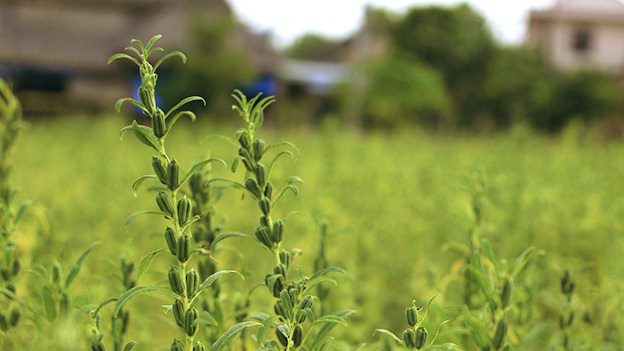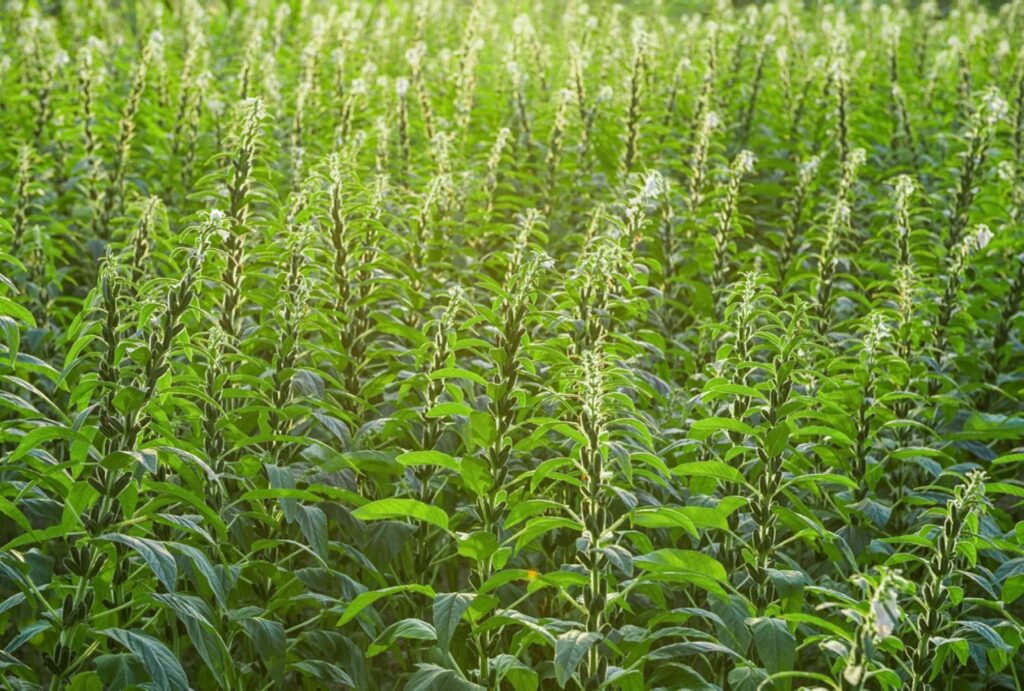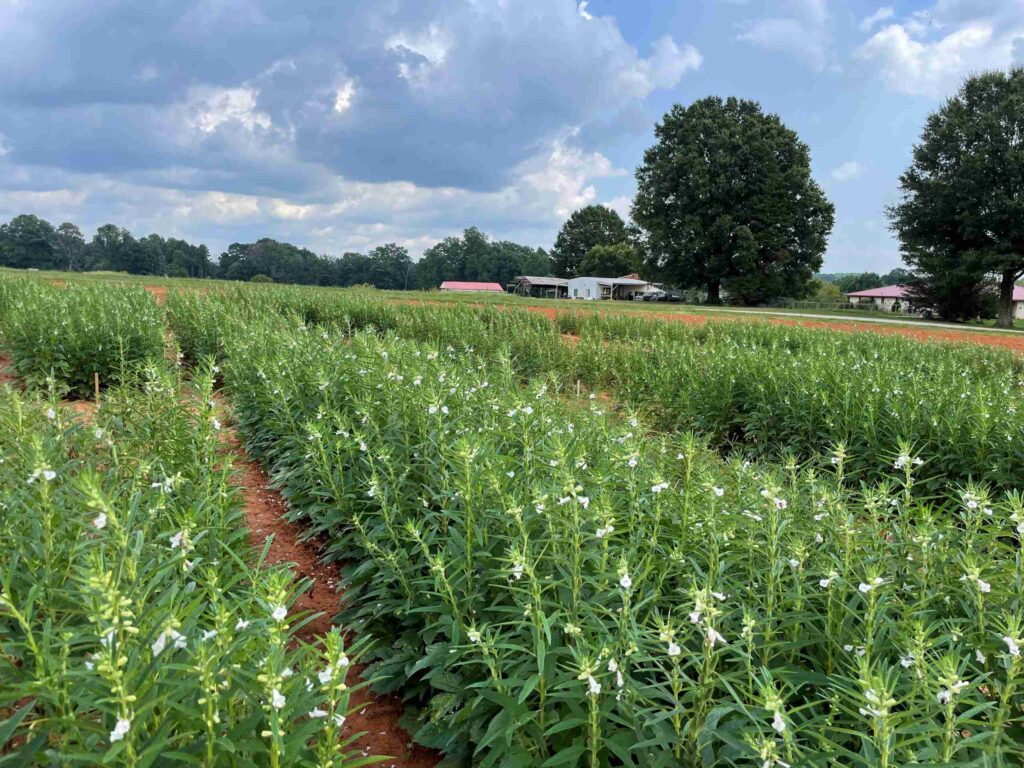TL;DR: Where Do Sesame Seeds Come From?
Sesame seeds originate from the sesame plant (Sesamum indicum), native to Africa and India, domesticated over 3,000 years ago. This resilient annual herb grows in warm, tropical climates, producing pods that burst open to reveal tiny, nutrient-rich seeds. Major producers include Sudan, India, and Myanmar. Sesame offers health benefits like heart support and antioxidants, and it’s used in cooking, oil, and industries. At Sadbhaav Spices, we source premium organic sesame seeds from India’s top regions for global export. Read on for a deep dive into its history, botany, cultivation, and more.
As a leading spices manufacturer and exporter in India, Sadbhaav Spices brings years of expertise in sourcing and processing premium sesame seeds. We’ve built our reputation on quality, sustainability, and global partnerships, ensuring every batch captures the essence of this ancient crop. In this guide, we’ll explore the origins of sesame seeds, the botany of the plant, how it’s grown and harvested, its nutritional value, uses, and challenges. Backed by reliable sources and our industry knowledge, this blog aims to inform food enthusiasts, buyers, and businesses alike.
Sesame seeds aren’t just a kitchen staple—they’re a global superfood with a fascinating backstory. Let’s break it down step by step for easy reading.
The Origins and History of Sesame Seeds
Sesame seeds have one of the oldest histories among cultivated crops. Archaeological finds show they were domesticated over 3,000 years ago, possibly as early as 5,000 years in the Harappa Valley (modern-day Pakistan and India).



Originally native to sub-Saharan Africa and the Indian subcontinent, sesame spread via ancient trade routes. It reached Mesopotamia, Egypt, and the Middle East early on.
In ancient times:
- Babylonians and Assyrians used sesame oil for cooking, lighting, and even as money around 4,000 years ago.
- Egyptian tombs from 3,600 years ago held sesame seeds for rituals.
- The Ebers Papyrus (1550 BCE) recommended sesame oil for health issues like headaches.
The crop traveled to China by 300 BCE, becoming key in medicine and food. In India, called “til,” it’s sacred in Hindu traditions, symbolizing immortality, and featured in festivals like Makar Sankranti.
Sesame arrived in the Americas in the 17th century through the slave trade, influencing U.S. Southern cuisine as “benne” seeds.
Botanically, wild sesame relatives are African, but the cultivated Sesamum indicum likely domesticated in India or Indonesia’s Sunda Islands.
Today, production has grown massively—from 1.42 million tons in 1961 to 6.67 million in 2021—driven by demand for healthy oils and foods. At Sadbhaav Spices, we continue this tradition with organic, high-quality exports.
Botany of the Sesame Plant
The sesame plant, Sesamum indicum, is an annual herb in the Pedaliaceae family. It’s tough, thriving in dry areas.
Key features:
- Height: 50-100 cm tall, sometimes up to 6 feet.
- Leaves: Opposite, 4-14 cm long; lower ones smooth, upper serrated.
- Stem: Erect, branched, hairy.
- Flowers: Bell-shaped, white, pink, or purple; self-pollinating, 3-5 cm long.
- Pods: Oblong capsules, 2-8 cm, holding 50-100 seeds each.
- Seeds: Small ovals (3-4 mm), colored white to black.
It prefers warm temps (over 23°C), well-drained sandy loam soil (pH 5.5-8.0), and has a taproot for drought resistance.
The life cycle lasts 90-150 days. Modern varieties don’t shatter easily, aiding harvest.
See the plant in action:
Cultivation and Growing Regions Worldwide
Sesame grows best in tropical/subtropical areas (40°N to 40°S). Sow seeds after frost, spaced 30-45 cm apart. It needs 500-650 mm rain or irrigation, full sun.
Top producers (2023 data):
- Sudan: 1.37 million tonnes
- India: 0.8 million tonnes (Gujarat, Rajasthan key)
- Myanmar, China, Nigeria
Africa (Tanzania, Burkina Faso) relies on small farms. Sustainable methods like rotating with legumes boost yields.
Global output: 6.74 million tonnes in 2022.
Harvesting and Processing of Sesame Seeds
Harvest 90-150 days in, when leaves yellow and pods dry. Cut plants, bundle, dry upright.
Steps:
- Threshing: Beat bundles to release seeds.
- Winnowing: Remove debris.
- Drying: To 6-7% moisture.
Processing: Clean, hull (for white seeds), extract oil. Modern farms use combines.
Images of the process:
Types of Sesame Seeds
Varieties differ by color and prep:
- White: Hulled, mild, sweet; common in baking.
- Black: Unhulled, nutty, antioxidant-packed; used in Asian foods.
- Golden/Brown: Unhulled, balanced flavor.
- Toasted: Roasted for extra crunch.
- Hulled vs. Unhulled: Hulled milder; unhulled nutrient-dense.
Close-ups:
Nutritional Benefits of Sesame Seeds
Sesame seeds are a powerhouse: 45-57% healthy fats, 20% protein, fiber, vitamins, and minerals like calcium and iron.
Benefits include:
- Heart Health: Lowers cholesterol and blood pressure.
- Bone Strength: High in calcium and magnesium.
- Antioxidants: Sesamin fights inflammation and cancer risk.
- Blood Sugar Control: Helps manage diabetes.
- Skin/Hair: Improves elasticity and growth.
- Digestion/Immunity: Fiber and nutrients boost gut and immune function.
Culinary and Industrial Uses
In the kitchen:
- Sprinkle on breads, salads, stir-fries.
- Make tahini, hummus, gomashio.
- Flavor Asian dishes, sweets.
Industrially:
- Oil for cosmetics, meds, biofuels.
- In paints, soaps, animal feed.
Economic Importance of Sesame Seeds
As a cash crop, sesame supports small farmers in Africa and Asia. Prices: $800-1700 per tonne. It drives economies in Sudan and India, creating jobs in farming and export.
Challenges in Sesame Cultivation and Sustainability
Issues:
- Climate change: Droughts reduce yields.
- Pests/Diseases: Aphids, wilt.
- Low Yields: Traditional varieties underperform.
- Storage: Moisture causes spoilage.
Solutions: Drought-resistant hybrids, organic farming, better storage.
At Sadbhaav Spices, we prioritize sustainable sourcing.
Africa and India, domesticated 3,000+ years ago.
Tall herb (50-100 cm) with bell flowers and seed pods.
Cut, dry, thresh plants to extract seeds.
Sesame seeds bridge ancient history and modern nutrition. From African origins to Indian fields, they’re vital worldwide. At Sadbhaav Spices, we deliver top-quality sesame for your needs. Visit https://sadbhaavspices.com/ to explore our exports.

One Response